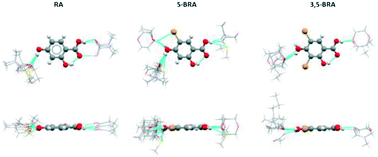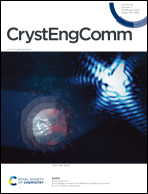Steric influence on solvate formation – a comparison of resorcylic acid and two brominated derivatives†
Abstract
The molecular structure of a candidate pharmaceutical drug compound is routinely modified during lead optimisation. While the difference in pharmacological effect may be subtle, the effect on the solid-state landscape can be unpredictable and dramatic. In the present study we investigate the effect of small changes in steric bulk of a substituent on solvate formation with the model compounds β-resorcylic acid, 5-bromo-β-resorcylic acid and 3,5-dibromo-β-resorcylic acid. Overall, 18 solvates were structurally characterised, half of those are observed for the monobrominated compound. Although none of the crystal structures show isostructurality, there are three major interaction motifs: centrosymmetric carboxylic acid homodimer formation with solvent interaction through the 4-hydroxyl group into finite tetramers, infinite chain formation of these tetramers, and no homodimer formation. Using the first interaction shell around the host (resorcylic acid) molecules, the effect of the steric hindrance by blocking of certain interaction sites can be visualised. The realisation of halogen bonds leads to a loosening of the molecular packing, which likely leads to increased solvent inclusion. It can be concluded that the introduction of steric bulk furthers solvent inclusion, a factor that must be considered during lead optimisation.

- This article is part of the themed collection: Host‒Guest chemistry: in honour of Luigi Nassimbeni’s 9th decade


 Please wait while we load your content...
Please wait while we load your content...